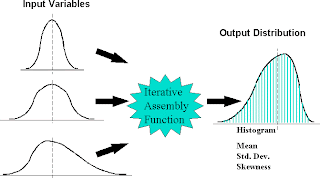1.Judgement Phase :
This phase includes -
(1)Identification of the real-life problem,
(2)Selection of an appropriate goal and the value of various variable related to the goals,
(3)Appropriate scale of measurement,and
(4)Formulation of an appropriate model of the problem, abstracting the essential information so that a solution at the decision-maker's goal can be sought.
2.Research Phase :
This phase is the largest and longest among the other two.
However,the remaining two are also equally important as they provide the basis for a scientific method.
This phase utilizes-
(1)Observations and data collection for a better understanding of what the problem is,
(2)Formulation of hypothesis and models,
(3)Observation and experimentation to test the hypothesis on the basis of additional data,
(4)Analysis of the available information and verification of the hypothesis using pre-established measures of
effectiveness,
(5)Predictions of various results from the hypothesis, and
(6)Generalization of the results and consideration of alternative methods.
3.Action Phase : This phase consists of making recommendations for decision process by those who first posed the problem for consideration, or by anyone in a position to make a decision influencing the operation in which the problem occurred.
This phase includes -
(1)Identification of the real-life problem,
(2)Selection of an appropriate goal and the value of various variable related to the goals,
(3)Appropriate scale of measurement,and
(4)Formulation of an appropriate model of the problem, abstracting the essential information so that a solution at the decision-maker's goal can be sought.
2.Research Phase :
This phase is the largest and longest among the other two.
However,the remaining two are also equally important as they provide the basis for a scientific method.
This phase utilizes-
(1)Observations and data collection for a better understanding of what the problem is,
(2)Formulation of hypothesis and models,
(3)Observation and experimentation to test the hypothesis on the basis of additional data,
(4)Analysis of the available information and verification of the hypothesis using pre-established measures of
effectiveness,
(5)Predictions of various results from the hypothesis, and
(6)Generalization of the results and consideration of alternative methods.
3.Action Phase : This phase consists of making recommendations for decision process by those who first posed the problem for consideration, or by anyone in a position to make a decision influencing the operation in which the problem occurred.



